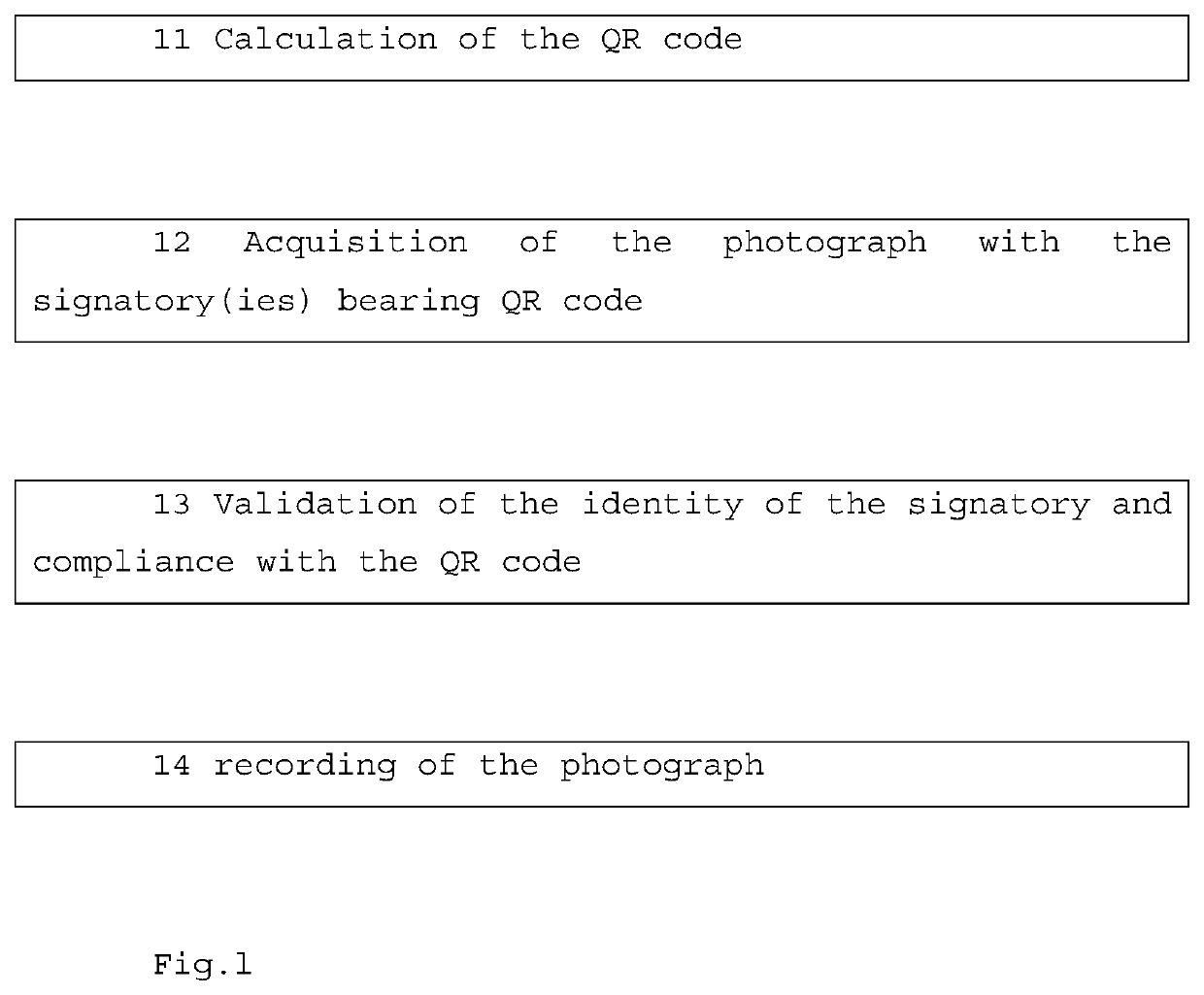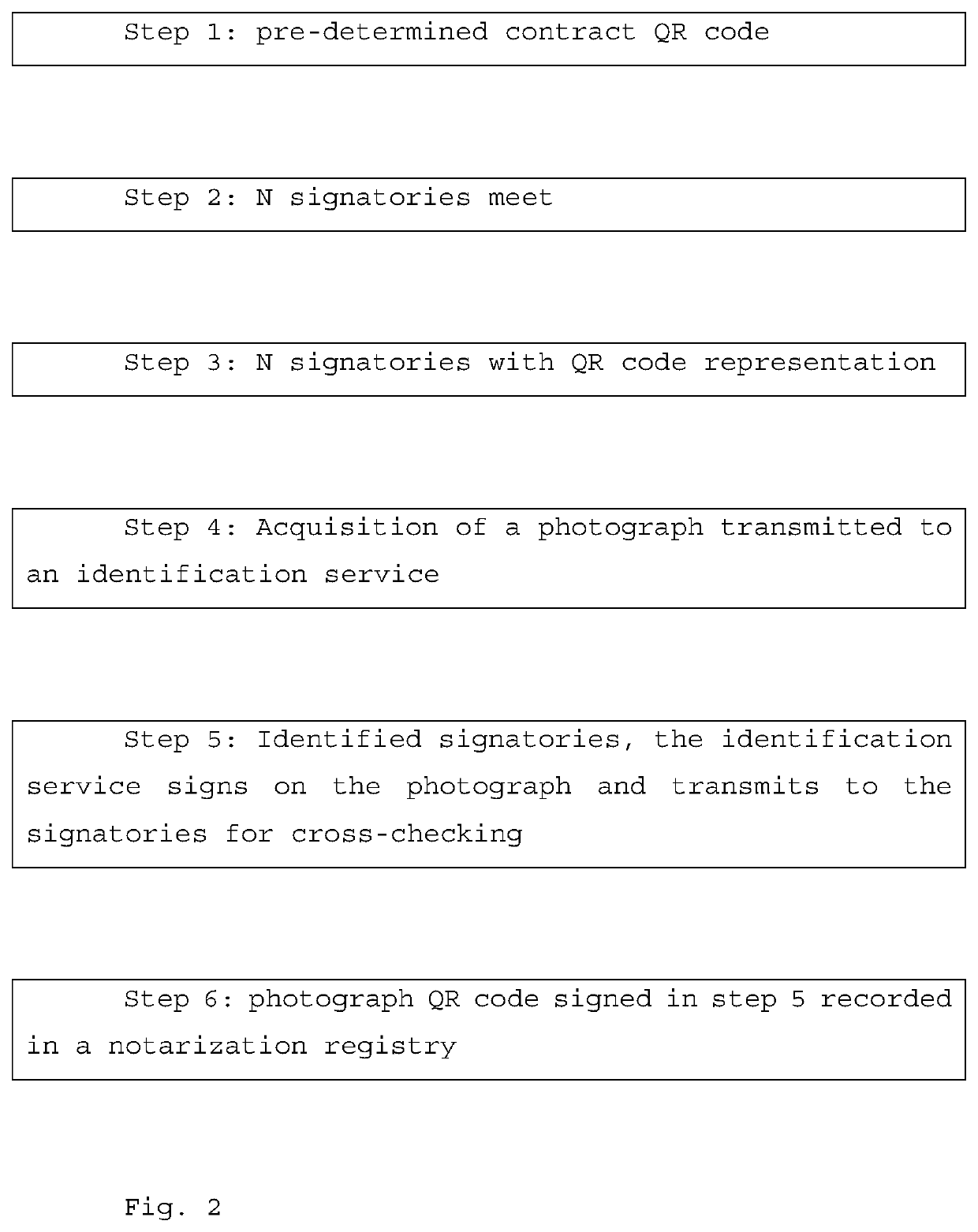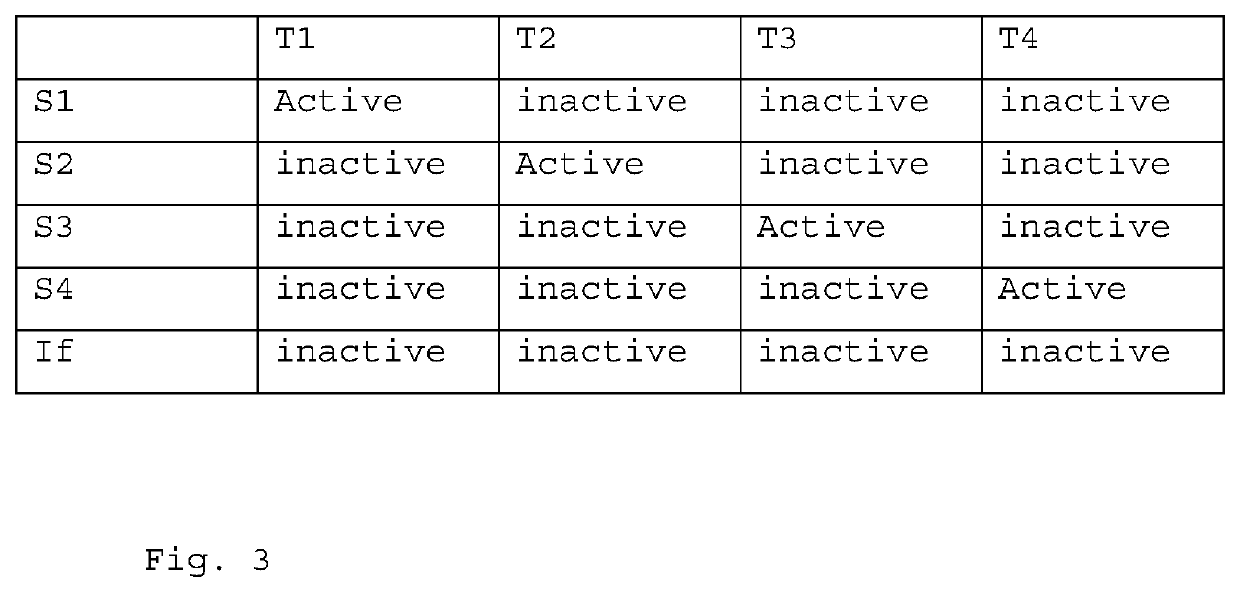Method for electronic signing of a document by a plurality of signatories
a plurality of signatories and electronic signing technology, applied in the direction of digital data authentication, digital data protection, etc., can solve the problems of cumbersome handwritten signatures, complicated use of most users, and problems such as electronic notarization of documents, and achieve the effect of simple and satisfactory
- Summary
- Abstract
- Description
- Claims
- Application Information
AI Technical Summary
Benefits of technology
Problems solved by technology
Method used
Image
Examples
first embodiment
[0058]FIG. 2 illustrates the method for electronic signing. A QR code of the contract is made available to each signatory. The N signatories meet in the same place to give their consents. They take a photograph of all the signatories, at least one of whom bears a representation of the QR code of the contract. The photograph is then transmitted to a third party identification service that can certify identity through automatic face recognition. When the N signatories are identified, the third party identification service signs on the photograph. The identification result with the signed photograph is returned to each signatory for confirmation. At the same time, a comparison of the QR code is also carried out on each signatory's telephone to verify that the QR code on the photograph is identical to the one held by each signatory. When the QR code and the identity of each signatory are confirmed, at least one signature of at least one signatory is provided and the photograph can be di...
second embodiment
[0060]FIG. 3 illustrates the method for electronic signing. In this embodiment, the signatories cannot all meet in the same place. Under this condition, an order of execution of the signatures is pre-established and accepted by all the signatories. According to the signature order, each signatory (S1, S2, S3, S4, Si . . . ) is switched between the active / inactive states at the times T1, T2, T3, T4 and Ti.
[0061]In the active state, a signatory is authorized to perform the step of validating, the step of acquiring the photograph, and the step of sending this photograph to others. In the inactive state, a signatory is limited to observing the development of the method for electronic signing.
[0062]Before the time T1, the signatory Si is in active state, which enables taking of a “selfie” photograph of his / her face with the QR code of the contract he / she is holding and to send it to the other signatories. Sending this photograph is equivalent to the electronic signing of S1's consent.
[00...
PUM
 Login to view more
Login to view more Abstract
Description
Claims
Application Information
 Login to view more
Login to view more - R&D Engineer
- R&D Manager
- IP Professional
- Industry Leading Data Capabilities
- Powerful AI technology
- Patent DNA Extraction
Browse by: Latest US Patents, China's latest patents, Technical Efficacy Thesaurus, Application Domain, Technology Topic.
© 2024 PatSnap. All rights reserved.Legal|Privacy policy|Modern Slavery Act Transparency Statement|Sitemap



